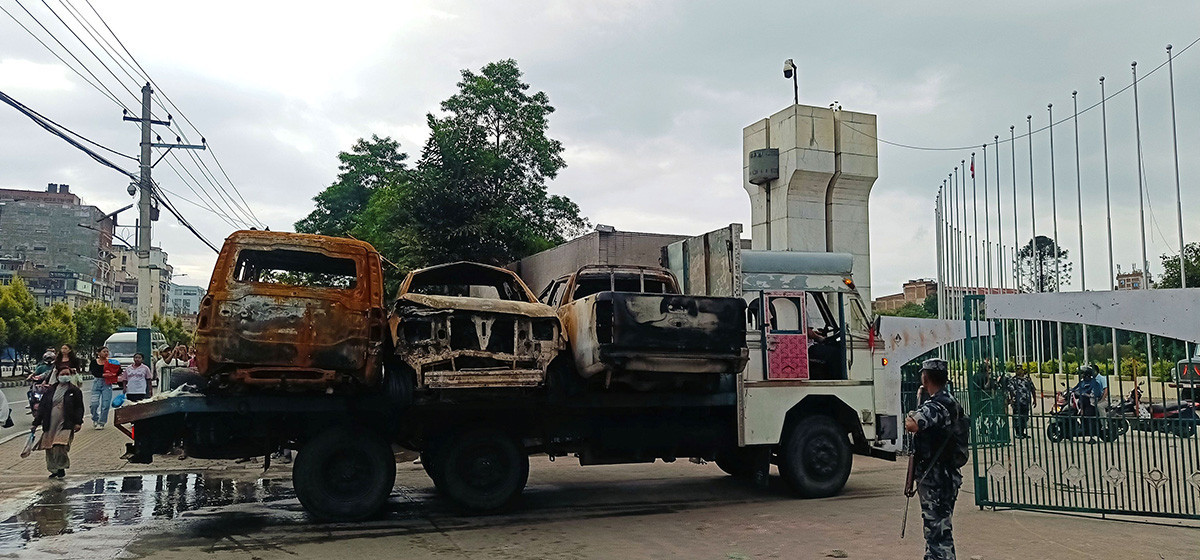Although food security and food self sufficiency sounds quite similar, those two are different terms. “Food security” means being able to get adequate and sufficient food, regardless of where it comes from but “food self sufficiency” is when we grow all the food we need, within the country. Thus, food self sufficiency is quite important in Nepal, majorly being a landlocked country.
Overviewing Nepal’s trade status, Nepal is facing trade deficit. Although, Nepal couldn’t get self sufficient in products as petroleum, machinery, medicines, there is still enough potential of becoming self sufficient in agricultural product such as vegetables, fruits and cereal grains by properly utilizing the available resources.
Eating junk food is bad for health!

Being a landlocked country, we must not overlook the fact that blockade from any of the two neighboring country can have great negative impact on availability of many basic needs including food. The demonic decision of imposing two month long blockade by India during the havoc of earthquake in 2015 had forced Nepal to think twice about the situation that is created by being dependent on almost each and everything on others. We must learn lesson from such traumatic condition and be prepared for any kind of similar situation that may happened in future by either of the two country. Not overlooking the possible consequences of internal, regional and geopolitical conflicts, we must always be prepared to cope with it.
Now accentuating the current situation i.e. worldwide pandemic Covid-19, we all know that lockdown has been implemented in most of the countries of the world, including Nepal. Being a communicable disease, all the imports must be cancelled down to minimize the risk of the spread of the disease which is alarmingly spreading in both the neighboring country. Also, all the export are decided to cut off by Indian government in order to smoothen the food material supply within their own country. Furthermore, for overcoming this pandemic, food(nutrition) is very much important because majority of death from Covid-19 positively correlate with weak immune system and we couldn’t deny the fact that immune system is positively correlated with nutrition. The import cut off therefore means, the production within the boundary of Nepal should be raised to meet the existing nutrition demand in the country.
From all these instances, we have now realized the importance of food self sufficiency in Nepal. Food self sufficiency can be achieved at different level beginning from national level to local level and even on individual level. So, despite the fact that making Nepal food sufficient at once sound quite overambitious, we could actually achieve it beginning from individual level. Every non-farming background citizens can also contribute Nepal in this mission. The major problem fixer in this regard i.e. farmers can contribute significantly in making country food self sufficient by adopting many of the feasible options to increase the production. Permaculture, Bio-intensive agriculture, mechanized agriculture, System of Rice Intensification(SRI) to raise the paddy production with less external inputs, multi-tier cropping, riverbed farming, use of more water efficient means of irrigation like drip irrigation, etc. and other several form of agricultural intensification incorporating sustainable approaches could be adopted by farmers for increasing the production. Growing crops and vegetables by adopting suitable practices by the citizens residing in urban areas or other areas with insufficient land can also contribute for being food self sufficient at individual level. Different innovative farming practices such as backyard gardening, vertical gardening, container gardening, hanging garden, aquaponics, tower gardening, Nutrient Film Techniques(NFT), hydroponics and most importantly rooftop gardening can be adopted by citizens based on their feasibility and suitability. Furthermore, underexploited and minor indigenous fruits and vegetables available in the locality with high nutritional value should also be utilized and commercialized for increasing food security. Nettle leaf(Sisnu), fiddlehead fern (niuro),amaranth leaves( latte),Lamb’s quarter( bethe),watercress( khole saag), raspberry(aiselu), bayberry(kaphal), Indian barberry(chutro),Nepalese firethorn( ghangaru), nutgall tree(bhakimlo), etc. are only few examples of indigenous fruits and vegetables. There are many more that could be utilized properly for addressing the food security problem.
Summing up, food being one of the critical need of the human being, every citizen has right to access it but several condition may intervene the smooth supply of these products. Covid-19, being one of the communicable disease, lockdown is implemented in the nation to stop its spread but it has much negative impact on import of food to meet the existing demand. This has arisen the huge need for Nepal to achieve food self sufficiency in order to provide food to its public during this pandemic. So, we can take this havoc of Corona as an opportunity leading Nepal toward food self-sufficiency by mobilizing human and other available resources for adequate production of the food within the country.


































